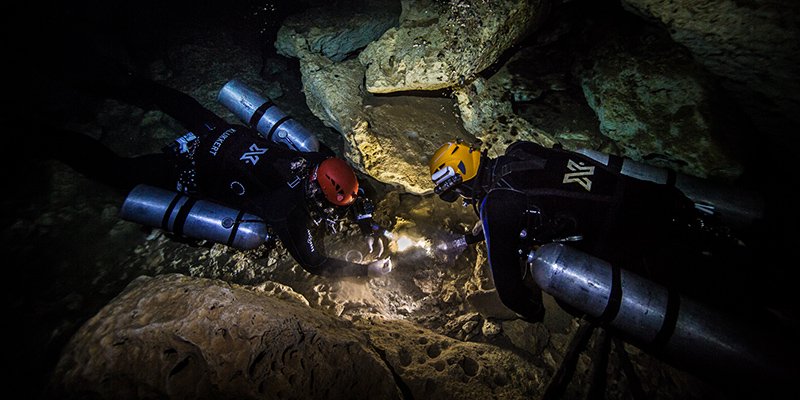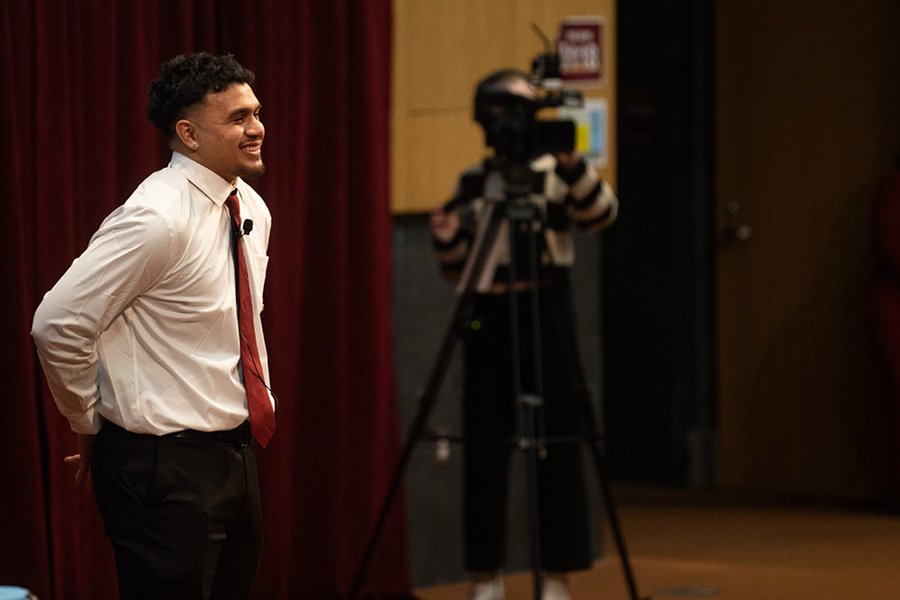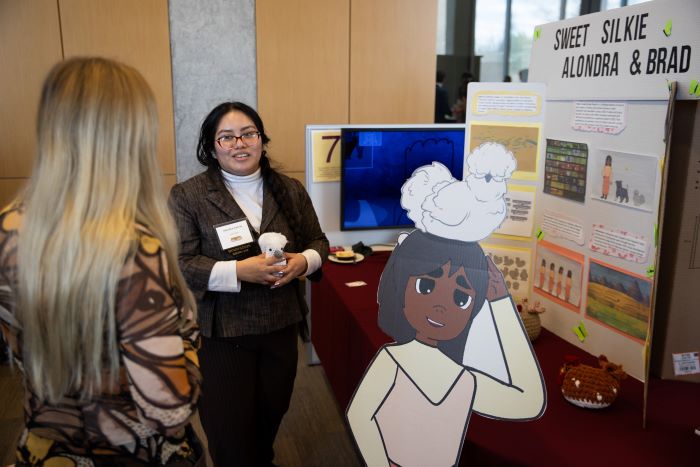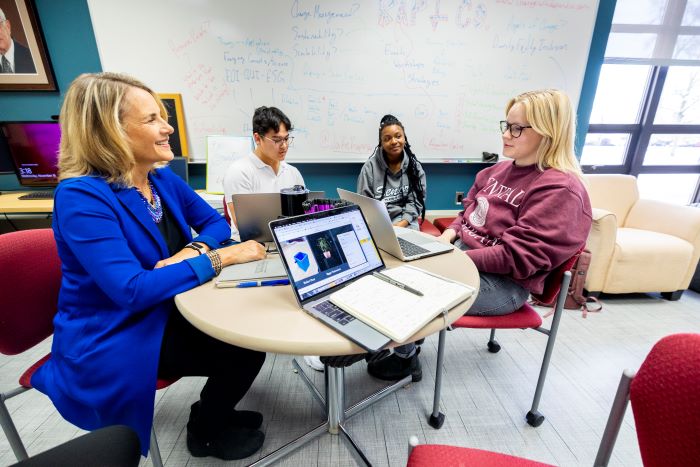
Start up
Passion. Potential. Pitches. Don't miss any of the 2025 New Venture Challenge excitement.
Tune in Friday, April 11 at 1 p.m. for great ideas and fierce competition. Then, join the judges, mentors, spectators and teams as they see who is going home with thousands of dollars in venture financing. The awards broadcast begins at 6:30 p.m. and one team will walk away as the overall best venture.
Central Michigan University’s College of Business Administration is the home of the Isabella Bank Institute for Entrepreneurship and the first Department of Entrepreneurship in the state of Michigan. We are a student-centric hub where experiential, curricular, and external entrepreneurial opportunities intersect.
Our mission is to maximize student success by fostering a campus-wide entrepreneurial mindset that promotes inter-disciplinary collaboration and the creation of new ventures.
We aim to create innovative programming, boost cross-campus and ecosystem collaboration and provide a comprehensive mentoring program.
Our institute provides extracurricular opportunities and is open to all undergraduate and graduate CMU students.
Are you interested in becoming an entrepreneur?
Every journey is unique. Explore the opportunities that interest you.
When Zachary Klukkert first laid eyes on the eight skulls, he knew he'd found something special.
It wasn't just that they were the bones of prehistoric giant lemurs, or that they were in a cave in Madagascar. It was that the cave was underwater, unseen and undisturbed for millennia.
The skulls, from extinct primate Pachylemur, were "just laying about, almost as if they were having a meeting," he said.
A biological anthropologist and a member of the Central Michigan University College of Medicine faculty, Klukkert was uniquely qualified to make and appreciate the discovery: He knows of only one other cave diving paleontologist in the world, and that scientist doesn't study primates.
Forbes and Outside magazine have covered Klukkert's work in Caribbean caves, and the PBS/Smithsonian Institution documentary special "When Whales Walked" featured his work in Madagascar. The National Science Foundation pictures and video from his fieldwork to mark National Fossil Day 2020.
After postdoctoral research at Johns Hopkins University School of Medicine, Klukkert came to Central in July 2020 where he teaches CMU medical students anatomy with a purpose.
"Being a paleontologist, a lot of my work is focused on things that are no longer present," he explained. "But in this time and age I felt that we all had a responsibility to bring our skills to bear for good for society today. And one of the most direct ways that I can have a positive effect is by helping to train tomorrow's physicians.

Cave diving is a fairly new discipline, pioneered in the 1970s by hardcore explorers. Cave diving to hunt for fossils is even newer. Klukkert said 2010 marked the first time extinct primate remains were found in flooded caves.
Technically, most of Klukkert's finds are known as "subfossils" — they haven't undergone the slow mineral replacement that turns them from bone to stone. Though they may be many thousands of years old, the stable freshwater environment and a lack of microorganisms keep them pristine.
"These bones look absolutely beautiful, like museum specimens," Klukkert said.
The vanished past they reveal offers clues to our present. Klukkert studies paleobiology — understanding the biology and ecosystems of bygone animals — and he can infer much from these remains. Part of his research, for example, involves tooth shape and what it tells about an animal's diet and ecological niche.
Sometimes, there are surprises. He said enamel missing from lemur teeth posed a mystery — until researchers figured out digestion by a type of crocodile would dissolve the enamel. Both predator and prey are now extinct, but the discovery gave a glimpse into the circle of life long ago.
By researching extinct animals, Klukkert said he can "zoom out" to consider questions about what makes or breaks ecosystems — questions of great relevance in our era of accelerated extinctions.
Evidence suggests human presence in Madagascar between 1,000-10,000 years ago. While Klukkert's research does not include material that predates human arrival, it does predate the faunal collapse on the island that is attributed to human actions.
The research provides perspective that a snapshot of the present can't offer. For example, he said the Americas and Madagascar have both lost about one third of their primate biodiversity, measured in terms of species (Madagascar) or genera (America), in the past 100-4,000 years. So, when counting recent extinctions, 1,000 years ago might be a better starting point than today.
"We can see that there is a dangerous slope," he said.
Klukkert grew up in landlocked New Mexico, dreaming of becoming a marine biologist. That was not to be, but as a primate anatomy grad student he traveled to the Dominican Republic to assist after cave divers discovered skull fragments from an extinct monkey. Frustrated to be stuck on dry land, he took up the divers' offer to teach him basic scuba.
Since caves were the new frontier for his research, he went on to earn certification in cave diving despite the dangers involved.
"We train to do dangerous things safely," he said.
Klukkert said he wasn't afraid of confined spaces but wasn't sure whether he would enjoy "climbing around in wet rocks." Then came the first time he descended into a cave through a vertical passage, or chimney.
"The only light present was from my light on my hand," he said, "and it caught this glimmering golden sand all across the floor of the next passage, and I felt like I was in another universe. And that's when I was completely hooked."
This is a side of the world others never get to see, he said. "That's been my happy place ever since."
Before the pandemic, Klukkert went on a three- to four-week expedition in Madagascar every year, journeying days to get there, diving for two weeks and cataloging specimens before making the long trek home. His next trip is in limbo, awaiting the return of safe travel.
He'd like to dive in Cuba, where an extinct monkey has been identified, as well as in Brazil and other parts of South America. But before that, he has dozens of locations still to explore in Madagascar.
"There may well be a trove of fossils waiting for someone to look at for the first time," he said.
Learn more about Klukkert on his website.

Explore special opportunities to learn new skills and travel the world.

Present your venture and win BIG at the New Venture Challenge.

Boost your entrepreneurial skills through our workshops, mentor meetups and pitch competitions.

Learn about the entrepreneurship makerspace on campus in Grawn Hall.

Present a 2-minute pitch at the Make-A-Pitch Competition and you could win prizes and bragging rights!

Connect with mentors and faculty who are here to support the next generation of CMU entrepreneurs.

Are you a CMU alum looking to support CMU student entrepreneurs? Learn how you can support or donate to the Entrepreneurship Institute.